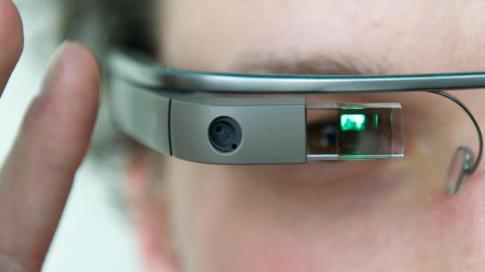Google glass to make a revolution in Cardiology

Google Glass, comprises of a wearable, without hands PC with an optical head-mounted display worn by interventional cardiologists in the catheterisation lab.
For the first time, a gathering of cardiologists has effectively utilized the eye-wearable gadget Google Glass to control the opening up of a chronically blocked right coronary artery in the cardiovascular cath lab.Cardiologists from the Institute of Cardiology, Warsaw, Poland’s capital city, effectively restored blood stream in the blocked right coronary artery of a 49-year-old male patient supported by Google Glass with an optical head-mounted gadget.
The digital presentation of 3D computed tomographic recreations in a versatile application furnished with a hands free voice acknowledgment framework and a zoom capacity empowered the doctorsto unmistakably visualize the distal coronary vessel.It helped in the advancement of the guide wire with reference to the course of the blocked vessel portion.
The methodology was completed effectively with implantation of two drug-eluting stents.”This case exhibits the novel use of wearable gadgets for showcase of informations in the catheterisation lab that can be utilized for better arranging and direction of interventional methodology,” said lead examiner Maksymilian P Opolski from the Institute of Cardiology.”It additionally gives evidence of idea that wearable gadgets can enhance user comfort and system effectiveness in interventional cardiology,” Opolski included.
Google Glass, comprises of a wearable, without hands PC with an optical head-mounted display worn by interventional cardiologists in the catheterisation lab.The optical head-mounted digital display can appear and catch pictures and recordings while collaborating with the environment.This display is a sample of the idea of virtual reality in which the client is supplemented with extra data produced by the gadget.
“Versatile innovation offers an incremental chance to extend the current open stage for portable applications, which surpassed the financial limit restrictions of advanced angiography frameworks with devoted screens for projection of Computed tomography angiography (CTA) data sets,” Dr Opolski pointed out.
Moreover, wearable gadgets may be possibly furnished with filter lenses that give assurance against X-radiation.Major medical institutions are now utilizing it to train doctors and help in diagnosing for treatment, said the report distributed in the Canadian Journal of Cardiology./Agencies




 del.icio.us
del.icio.us Digg
Digg

Post your comment